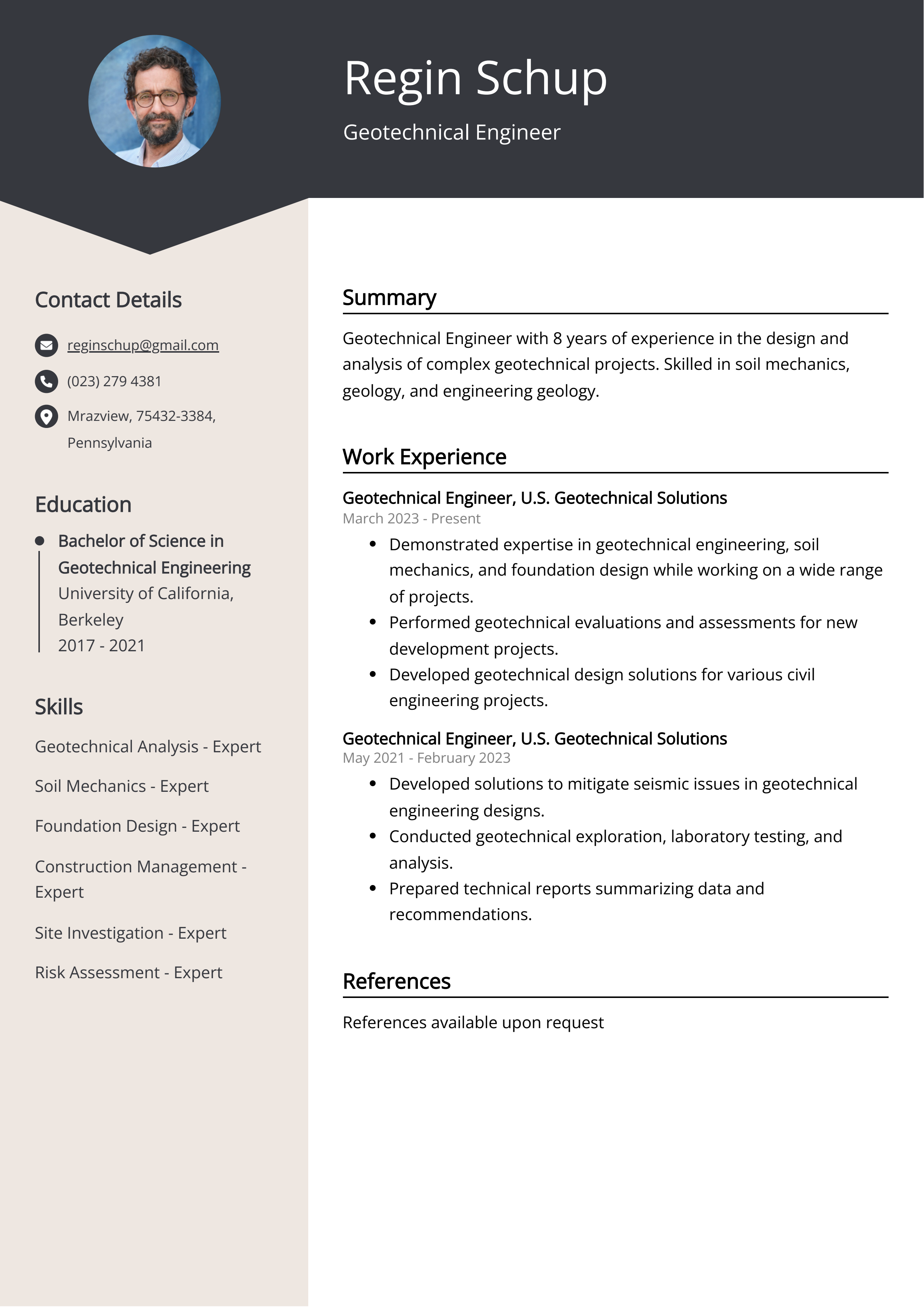Unknown Facts About Geotheta
Unknown Facts About Geotheta
Blog Article
The smart Trick of Geotheta That Nobody is Talking About
Table of ContentsSome Known Factual Statements About Geotheta Geotheta Things To Know Before You BuyThe Only Guide for GeothetaGeotheta for BeginnersGeotheta Can Be Fun For Anyone

They conduct site investigations, gather examples, do lab examinations, and assess information to review the viability of the ground for construction projects - Geotechnical Engineers. Based upon their searchings for, geotechnical engineers provide recommendations for structure style, incline security, keeping structures, and mitigation of geotechnical hazards. They collaborate with various other experts, such as engineers, architectural engineers, and building and construction teams, to ensure that geotechnical factors to consider are incorporated into the general project layout and execution
By analyzing the habits and properties of dirt and rock, they can determine prospective geotechnical hazards such as landslides, dirt settlement, or slope instability. Their experience aids prevent failings or mishaps that could endanger lives and residential or commercial property. Here are some thorough responsibilities and responsibilities of a geotechnical designer: Site Investigation: Geotechnical designers conduct site examinations to gather information on subsurface conditions.
They interpret the data to understand the residential properties and actions of the dirt and rock, including their stamina, permeability, compaction qualities, and groundwater conditions. Geotechnical Evaluation and Layout: Geotechnical engineers evaluate the data accumulated throughout site investigations to analyze the security and suitability of the website for building tasks. They do geotechnical calculations and modeling to evaluate aspects such as bearing capacity, negotiation, slope stability, side earth pressures, and groundwater circulation.
The Only Guide for Geotheta
Foundation Style: Geotechnical designers play an essential function in making foundations that can securely sustain the designated framework. They evaluate the dirt conditions and tons needs to identify the proper foundation type, such as shallow foundations (e.g., grounds), deep structures (e.g (https://realistic-swam-lvtf1k.mystrikingly.com/blog/unlocking-the-secrets-of-geotechnical-engineers-the-geotheta-advantage)., heaps), or specialized strategies like soil improvement. They consider variables such as settlement limits, birthing capability, and soil-structure interaction to establish ideal structure designs
They examine building plans, display site activities, and conduct area evaluations to verify that the style recommendations are adhered to. If unexpected geotechnical concerns develop, they assess the circumstance and provide referrals for remediation or modifications to the design. Danger Assessment and Mitigation: Geotechnical designers examine geotechnical hazards and dangers connected with the project website, such as landslides, liquefaction, or soil erosion.

Partnership and Communication: Geotechnical engineers function carefully with various other professionals entailed in a job, such as engineers, structural engineers, and construction teams. Reliable communication and cooperation are necessary to incorporate geotechnical considerations into the overall task design and building procedure. Geotechnical engineers supply technological know-how, solution queries, and make sure that geotechnical needs are met.
The Ultimate Guide To Geotheta
Below are some sorts of geotechnical engineers: Foundation Engineer: Structure designers concentrate on developing and examining structures for structures. They examine the dirt problems, tons demands, and site features to determine the most appropriate foundation kind and layout, such as superficial structures, deep structures, or specialized strategies like pile foundations.
They review the variables affecting incline stability, such as soil properties, groundwater problems, and slope geometry, and establish methods to stop incline failures and mitigate threats. Quake Engineer: Earthquake designers focus on examining and creating structures to withstand seismic pressures. They examine the seismic danger of a site, evaluate dirt liquefaction potential, and create seismic layout requirements to guarantee the safety and strength of structures throughout earthquakes.
They carry out area testing, collect examples, and evaluate the collected information to characterize the dirt buildings, geologic formations, and groundwater conditions at a website. Geotechnical Instrumentation Designer: Geotechnical instrumentation engineers concentrate on check my blog surveillance and determining the actions of soil, rock, and frameworks. They set up and maintain instrumentation systems that keep an eye on factors such as dirt settlement, groundwater levels, incline activities, and structural variations to analyze performance and supply early cautions of possible issues.
Indicators on Geotheta You Need To Know
They conduct tests such as triaxial examinations, combination examinations, direct shear tests, and leaks in the structure examinations to gather data for geotechnical analysis and style. Geosynthetics Designer: Geosynthetics designers concentrate on the design and application of geosynthetic materials, such as geotextiles, geogrids, and geomembranes. They utilize these products to improve soil security, enhance inclines, provide drainage services, and control erosion.
They tend to be investigative people, which suggests they're intellectual, reflective, and investigative. They are interested, methodical, logical, analytical, and logical. Some of them are also social, meaning they're kind, charitable, cooperative, client, caring, useful, empathetic, sensible, and pleasant - Consulting Engineers.
In the workplace atmosphere, geotechnical designers use specialized software program tools to perform calculations, develop designs, and assess information. They prepare reports, testimonial job specs, interact with clients and group members, and coordinate task tasks. The workplace setting offers a conducive setting for research, evaluation, and partnership with various other professionals entailed in the job.
Some Ideas on Geotheta You Need To Know
They frequently check out project websites to perform site examinations, assess geotechnical conditions, and collect information for evaluation. These sees involve traveling to different places, occasionally in remote or challenging terrains. Geotechnical engineers might execute soil sampling, conduct tests, and screen building and construction tasks to ensure that the geotechnical elements of the job are being applied correctly.
Geotechnical engineers also work in specialized geotechnical research laboratories. Geotechnical research laboratory designers function extensively in these environments, handling screening tools, running tools, and taping data.
Report this page